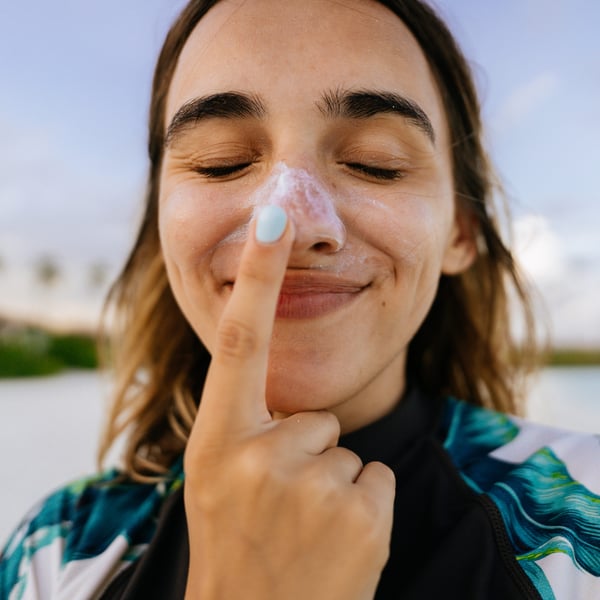
Sunscreen is the jack of all trades for a skincare product. It protects against damaging UV rays that cause skin cancer and premature aging while also acting as a moisturizer. But what should you be looking for when choosing sunscreen? Dr. Victoria Negrete, a board-certified dermatologist with Forefront Dermatology, walks us through some common sunscreen questions and shares her top 3 favorite sunscreens.
Chemical or Physical Sunscreen?
Chemical sunscreens contain organic compounds, such as oxybenzone, octinoxate, octisalate and avobenzone. They absorb UV rays as they attempt to enter the skin. Physical sunscreens contain active mineral ingredients, such as titanium dioxide or zinc oxide, which work by sitting on top of the skin to deflect damaging UV rays away from the skin. They each come with their own set of pros and cons. Chemical sunscreens tend to be thinner and spread more easily but require around 20 minutes after application before they begin to work. Physical sunscreens protect your skin as soon as you apply them. They are less likely to clog pores and irritate the skin, but they require more frequent re-application.
Is one application type better than another?
Sunscreen comes in many forms: gel, cream, lotion, stick, and spray. I always advise my patients that the best sunscreen is the one you’ll actually wear. Each application type comes with its advantages and rules for applying. Creams work well if you have dry skin, especially on your face. Lotions work best when needing to apply over a large area. Gels work great in hairy areas such as the scalp or chest. Sticks are useful in applying sunscreen around the eyes. Sprays are convenient when applying on active children. When it comes to application rules, stick sunscreens require four passes back and forth to ensure you are getting the correct amount of coverage, followed by rubbing it in to even out the layer. With a spray sunscreen, hold the nozzle close to your skin and spray generously. A good rule of thumb is once the skin is glistening, you have applied enough. After applying, rub in thoroughly to get even coverage. Adults need at least a shot glass worth of sunscreen to cover the entire body when it comes to a standard cream, gel, or lotion sunscreen. Apply thoroughly on all exposed areas of the body and rub in until the “white” color fades away.
What SPF should I choose?
The higher the SPF rating, the higher percentage of rays it protects against. I recommend always using at least a minimum of SPF 30 over your entire body, making sure not to skip places like your ears or even the top of your feet. It’s important to remember that even if you use SPF 100, you need to reapply regularly – it won’t last forever.
Dermatologist Recommended Sunscreen
There are hundreds of sunscreens available, it can be hard to choose. These three sunscreens are my top recommendations:
EltaMD UV Clear Broad-Spectrum SPF 46
I love EltaMD UV Clear due to being really good for acne-prone and rosacea-prone skin. It is available in clear or tinted and contains zinc oxide and octinoxate so it is considered both a chemical and physical sunscreen.
Skinceuticals Physical Fusion UV Defense SPF 50
This sunscreen is a top-notch physical blocking only sunscreen and has a tint that rubs in well. It is lighter than EltaMD and feels less like sunscreen.
Anthelios Melt-In Milk Sunscreen SPF 60
My over-the-counter selection favorite is La Roche-Posay Anthelios 60 Melt-in sunscreen milk. This sunscreen is fast-absorbing and feels light on your skin.
Sunscreen is a Proactive Measure against Skin Cancer.
It is important to do your own research on what sunscreen you most feel comfortable using. If you would like help deciding, your local board-certified dermatologist can assist. Find a location near you and schedule an appointment today.





